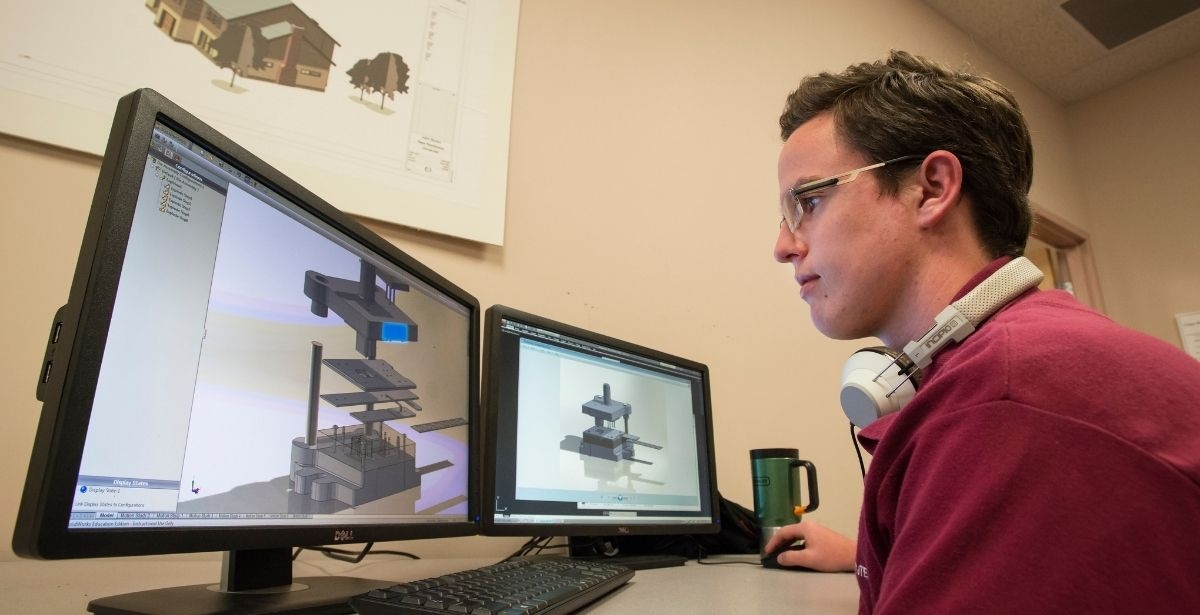
What Can 3D Design Be Used For?
If you saw a 3D image a few decades ago, chances are it was through a special viewer with 3D image reels, or through paper glasses with red and blue lenses in a movie theater. These days, thanks to the advances of technology, 3D images are much more accessible and advanced. They’re also used in a variety of industries. They help model different objects in architecture, engineering, and other industries.
The Benefits of 3D Designs
There are many benefits of using 3D designs over 2D designs, especially those that are hand-drawn.
- Greater Detail—3D designs allow the creator to show more detail of the object they create. For example, an architect can show a bird’s eye view of a building just as easily as a pedestrian’s view.
- Better Accuracy—If a part is drawn and then manufactured improperly, it can create major issues for the project. But with 3D designs, users can zoom in closely, view the object 360 degrees around, and spot any potential errors before the design is actually manufactured.
- Cost Savings—Because 3D designs are so accurate, the contractor can determine exactly how much of each material is needed for construction. That means they won’t overspend or order excess parts and materials.
- Easier Editing—3D designs are created in software such as AutoCAD and SolidWorks. This software allows designers to easily edit their designs, copy portions of their drawings, and save their documents to work on later.
- Compatible With 3D Printing—3D printing is the way of the future. You can send your 3D designs to 3D printers for easy manufacturing.
What Can You Use 3D Designs For?
To Design Blueprints: Architects used to draw blueprints out by hand, but these days they can create them on the computer. They use 3D designs to render buildings, homes, and other structures in great depth, from every angle. They can also design the details of the interior, and easily save and edit their drawings—something they couldn’t do with hand-drawn blueprints.
- To Manufacture Parts: Mechanical engineers use 3D models to design and develop machine parts as well as robotics. Those designs can be sent to 3D printers for easy manufacturing. 3D designs are also used to simulate tests and create prototypes.
- To Create Electrical Systems: Just as 3D models can be used to create machines, it can also be used to create the electrical systems that power those machines. This includes control systems of computers and supercomputers, electronics and microelectronics, and telecommunications systems. Electrical engineers can use these models to convert manual processes into automatic processes.
- To Develop Plumbing: Engineers can also use 3D designs to envision the plumbing systems for homes and commercial buildings. They can map out complex piping and draining systems, which is useful for new construction as well as retrofits and upgrades.
- To Create Prosthetics: The uses of 3D designs in the healthcare industry are vast, but did you know they can be used to design prosthetics? Biomedical engineers can create models for hands, arms, feet, and ankle prosthetics using 3D designs, which can then be 3D printed. They can also be used to create medical devices.
Are you interested in drafting 3D designs? At Porter and Chester Institute in Connecticut and Massachusetts, we offer a Computer Aided Drafting and Design program that will teach you to generate 3D models in software such as AutoCAD, Revit, and SolidWorks. Get started today—fill out the form to learn more.






